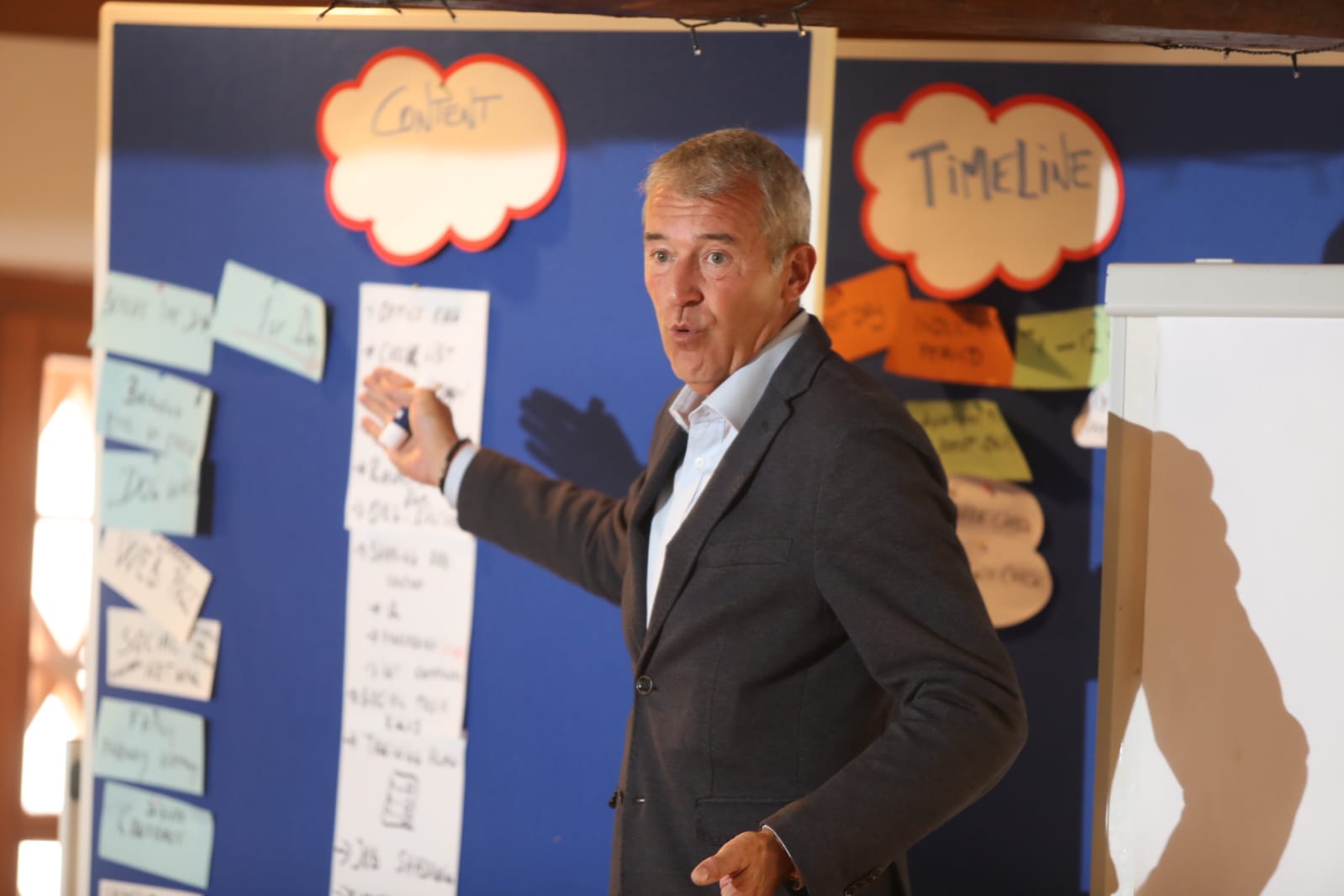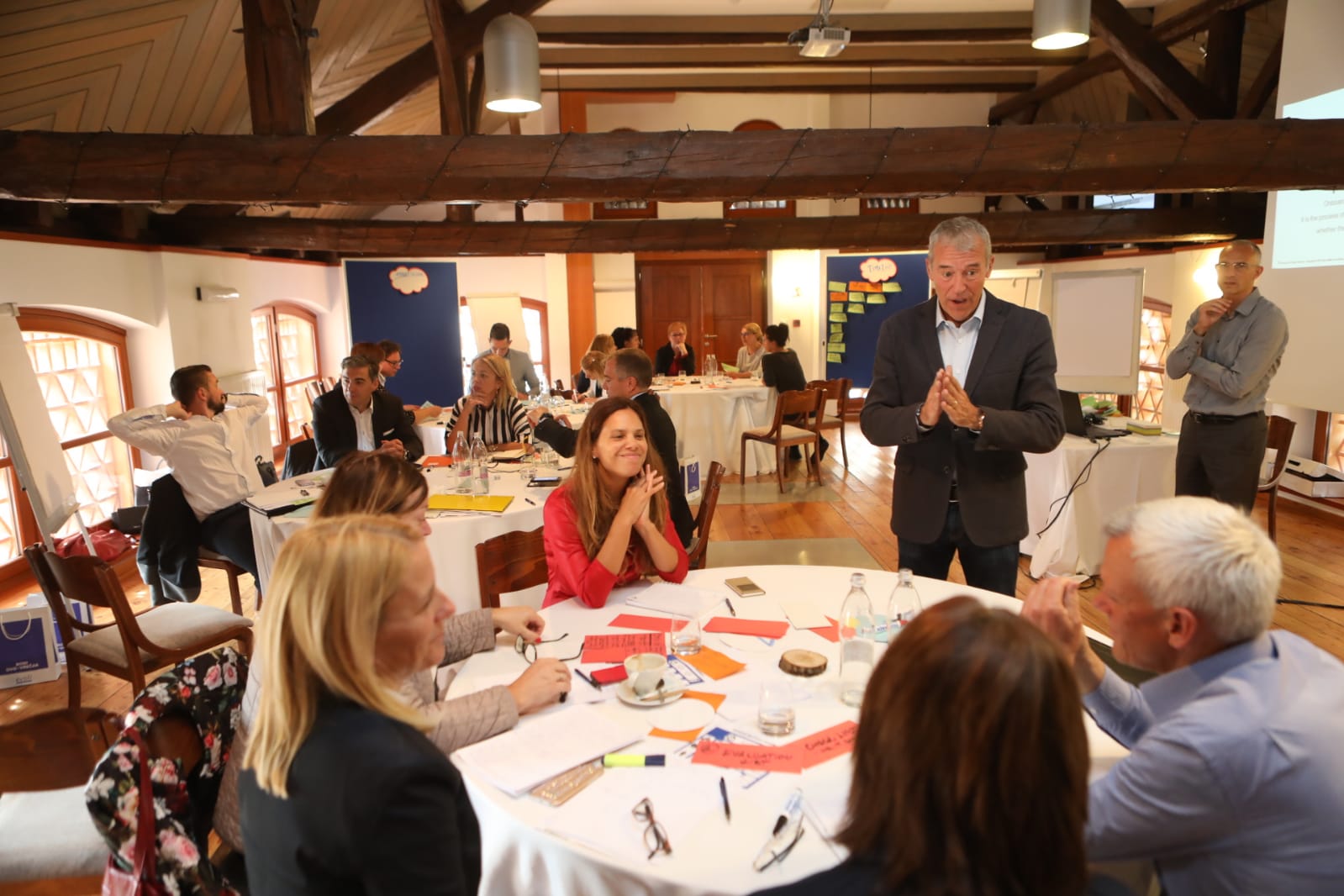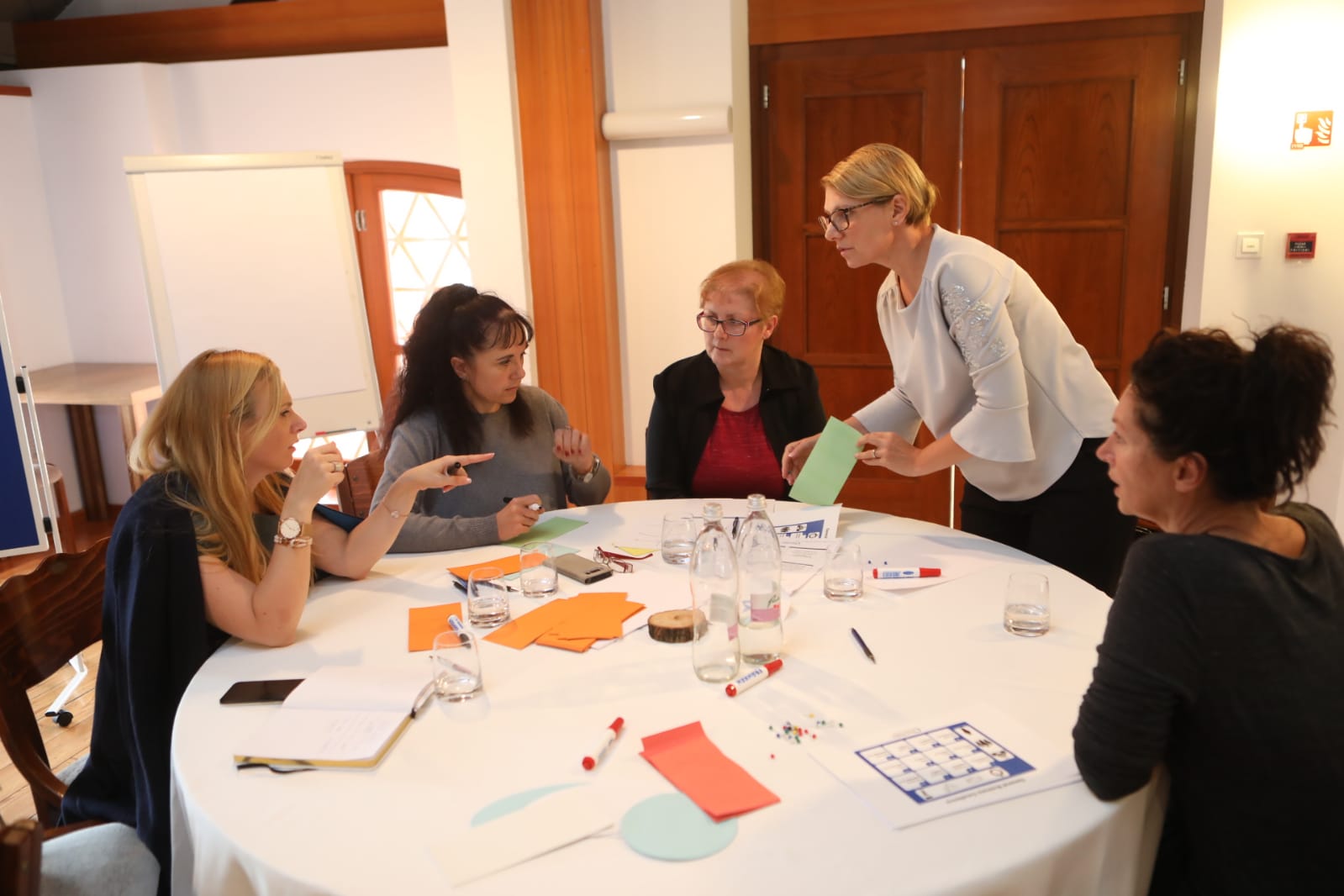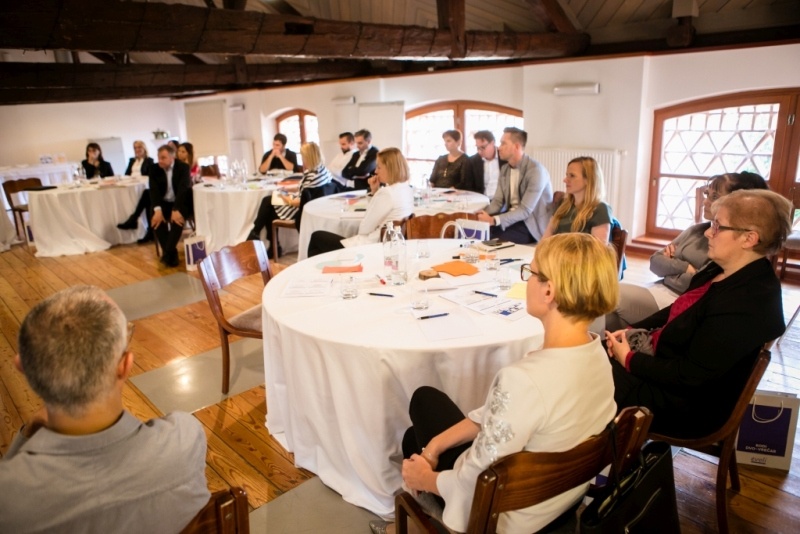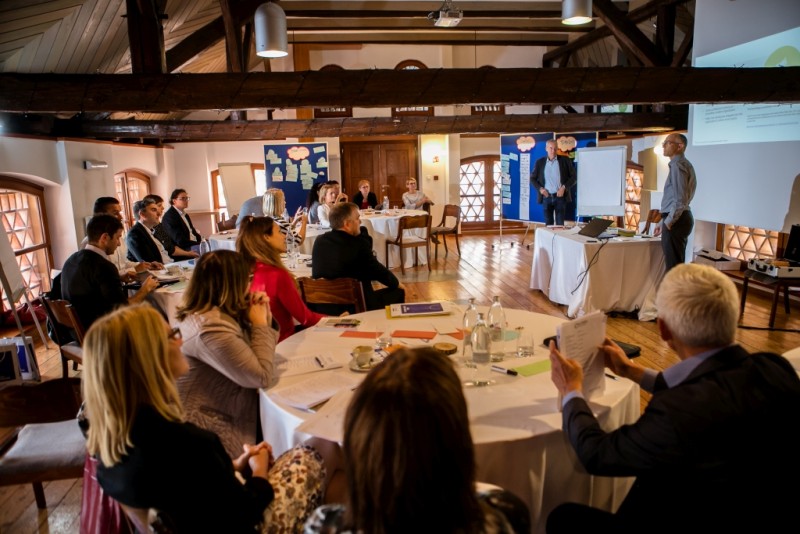Izvlečki in usmeritve iz srečanja Employee Experience
-

Srečanje Employee Experience
-

Srečanje Employee Experience
-

Srečanje Employee Experience
-

Srečanje Employee Experience
-

Srečanje Employee Experience
-

Srečanje Employee Experience
Zakaj je on-boarding tako pomemben?
On-boarding je kritična točka v življenjskem ciklu zaposlenega. Je proces vključevanja in pospeševanja novih članov tima, pa naj prihajajo iz organizacije ali izven nje. Je tudi proces, s katerim zaposleni pridobijo spretnosti, znanje in vedénje, s katerim sčasoma postanejo učinkoviti soustvarjalci uspeha podjetja. Proces vključevanja novega zaposlenega se začne že daleč pred prvim delovnim dnem in ima odločilni vpliv na predanost in motivacijo zaposlenega, kar je Alberto Platz prikazal tudi z raziskavami v podjetju Swarovski.
Kot ocenjuje Society for Human Resource Management (SHRM) (vir), iskanje in vključevanje novega zaposlenega organizacijo stane kar od 6 do 9 mesečnih plač. Vložek je torej velik. V sedanjem času, ko je trg dela postal zelo zahteven in je potreba po višji produktivnosti in učinkovitosti zaposlenih vedno intenzivnejša, je to zagotovo ena od pomembnejših tem za razvoj podjetja v odličnosti.
Za podjetja je zaskrbljujoč podatek te raziskave, da je fluktuacija v prvih 18 mesecih zaposlitve tudi do 50 odstotna. Zaposleni, ki po kratki zaposlitvi zapustijo podjetje, tako organizacijo obremenijo in za seboj pustijo visok pritisk na obstoječe resurse kot tudi na končni finančni rezultat podjetja.
Na drugi strani učinkovit on-boarding prinaša izboljšanje učinkovitosti zaposlenih do kar 15 %, kot so zapisali v raziskavi agencije Gartner (vir). Ugotovili so tudi, da zavzeti zaposleni delajo kar 57 % bolj efektivno in predstavljajo devetkrat nižjo verjetnost, da bodo zapustili delovno mesto.
Dober on-boarding ohrani novega zaposlenega predanega
Kot je povedal Alberto Platz, novi zaposleni običajno v podjetje pridejo 5 % točk bolj zavzeti kot njihovi kolegi v podjetju. Po dolgem iskanju in izbiranju delodajalca, gredo skozi celoten kadrovski proces in se v pričakovanju in pripravljenosti pojavijo na novem delovnem mestu. »Ali ni to odlična priložnost?« se sprašuje. »In kaj mi naredimo z njimi?« Po prvem letu zaposlitve se njihova predanost zmanjša pod raven predanosti tistih sodelavcev, ki so v podjetju že več kot 5 let.
Predstavljajte si scenarij, po katerem novi zaposleni pride v podjetje, v katerem nihče ne ve, da naj bi ta dan začel z delom. Ne pričaka ga prostor, kjer bo sedel, ne oprema, ki jo bo uporabljal, niti dobrodošlica novih sodelavcev. Prve usmeritev s strani pravih oseb pridejo šele takrat, ko zaposleni že zdavnaj v sebi začuti razočaranje, stres, zmedo celotnega procesa in se začne spraševati: »Ali sploh želijo, da delam tukaj?«
Ko razvijamo program on-boardinga, moramo zato poskrbeti za celoten spekter izkušenj, ki jih bo novi zaposleni imel, ko pride v naše podjetje; tako tehničnih kot čustvenih. V mislih moramo imeti, da bo ob prihodu občutil tveganje, saj prihaja v okolje in med ljudi, ki jih ne pozna.
Če poskrbite za jasen in dobro strukturiran proces vključevana zaposlenega, se izognete tudi slabši efektivnosti vseh v podjetju na dan prihoda novega zaposlenega. Ko vsak v podjetju ve, kakšna je njegova vloga pri prihodu novega zaposlenega, lahko delo poteka nemoteno naprej.
Pri oblikovanju procesa moramo razmisliti o štirih temah
ČASOVNICA
Kdaj se proces vključevanja začne in kdaj konča ter kako naj časovno poteka?DELEŽNIKI
Kdo vse je vključen v proces on-boardinga in kakšne so njihove vloge?VSEBINA
Kakšno vsebino naj novi zaposleni prejme v vsakem koraku – in kdaj naj se to zgodi?MERJENJE
Kako naj merimo proces vključevanja?
Podrobno o celotnem procesu in praksah podjetja Swarovski kot vsako leto pišemo v e-knjižici. Vabljeni, da pridobite vpogled v ustvarjanje odličnega procesa onboardinga, in si brezplačno knjižico prenesite tukaj.
Problem v mnogih podjetjih je, da z nedovršenim planom on-boardinga predane ljudi spremenijo v manj predane kot so bili pred tem. Kot ugotavlja agencija Gallup, se zgolj 12 % zaposlenih močno strinja, da je njihova organizacija učinkovita in uspešna pri vključevanju novih zaposlenih. Kako torej narediti ta proces zares učinkovit in boljši?
Pridružite se v program Employee Experience
S pomočjo programa Employee Experience boste naredili proces on-boardinga učinkovit, ker ga boste oblikovali s pomočjo modela Splošne poslovne odličnosti in znanjem praktičnega vodenja. Dosegli boste:
Dodajanje vrednosti.
Proces on-boardinga naj dodaja vrednost tako podjetju kot novemu zaposlenemu.Razvijanje dobrih odnosov.
Med novim zaposlenim in sodelavci naj obstajajo čustva/strinjanje, da so vzpostavili obojestransko zaupanje.Izboljšanje lojalnosti.
Notranji in zunanji deležniki bodo postali bolj lojalni, če bo celoten proces tekel jasno in učinkovito. Vpleteni ljudje naj imajo visoke standarde kakovosti. Proces naj omogoča popolne in jasne informacije. Dejavnik kakovosti je tudi čas. Ljudje naj bodo ambasadorji znamke.Vzpostavitev menedžerskega vedenja.
Deležniki naj novemu zaposlenemu predstavijo ogrodje za postavljanje ciljev, reševanje težav in komuniciranje, ki naj ga tudi sam uporabi za razvijanje menedžerskega vedenja.Ustvarjanje in izboljševanje Employeeship kulture.
Vsi deležniki, vključeni v vključevanje novega zaposlenega, naj izvajajo vse aktivnosti v skladu z vrednotami podjetja, ki jih predstavljajo tako oni kot podjetje. To bo omogočilo prenos vrednot podjetja na novega zaposlenega.
S celostnim programom Employee Experience v štirih korakih vplivate na vse te dejavnike in izboljšate učinkovitost procesa vključevanja novih zaposlenih, ohranite zaposlene zavzete in predane od prvega stika z njimi naprej, ter jih spremenite v ambasadorje podjetja, ki bodo ustvarjali odličen sloves podjetja na trgu.
Kaj pridobite?
Izboljšate produktivnost in omogočite dodajanje vrednosti v vseh aktivnostih, na vseh organizacijskih ravneh.
Ustvarite način za gradnjo in vzdrževanje dobrih odnosov z vsemi deležniki.
Razvijate in vzdržujete lojalnost zunanjih in notranjih uporabnikov proizvodov in storitev.
Oblikujete kulturo managerskega vedenja in Employeeship-a v vseh timih organizacije.
Posebnost programa Employee Experience je, da poleg pridobivanja znanj s seminarjem Praktično vodenje obsega tudi 7-mesečno mentorstvo in svetovanje strokovnjaka ter uporabo e-orodij in programov, s katerimi boste implementirali spremembe za doseganje najboljših rezultatov v vašem podjetju.
Vabljeni, da preberete več o programu Employee Experience.
Maja Šter ([email protected]) je diplomirana novinarka ter asistentka v marketingu v podjetju Claus Moller Consulting. CMC razvija podjetja, time in zaposlene na štirih področjih Splošne poslovne odličnosti: management, produktivnost, odnosi in kakovost. Spremljajte nas na omrežjih LinkedIn in Facebook ali nam pošljite e-mail.

